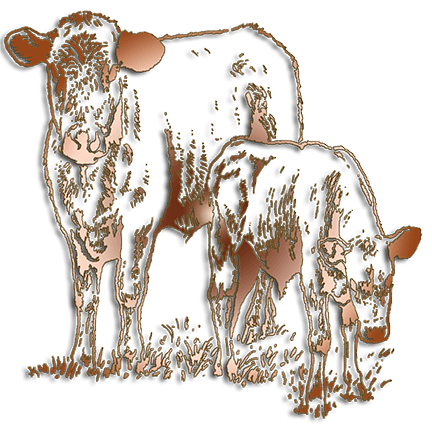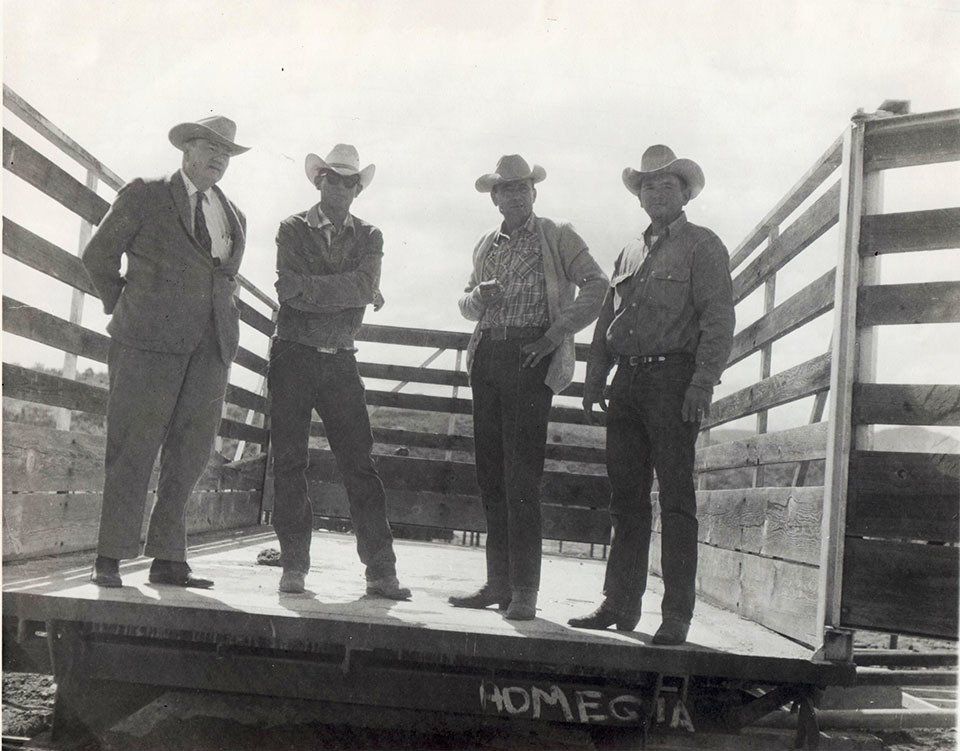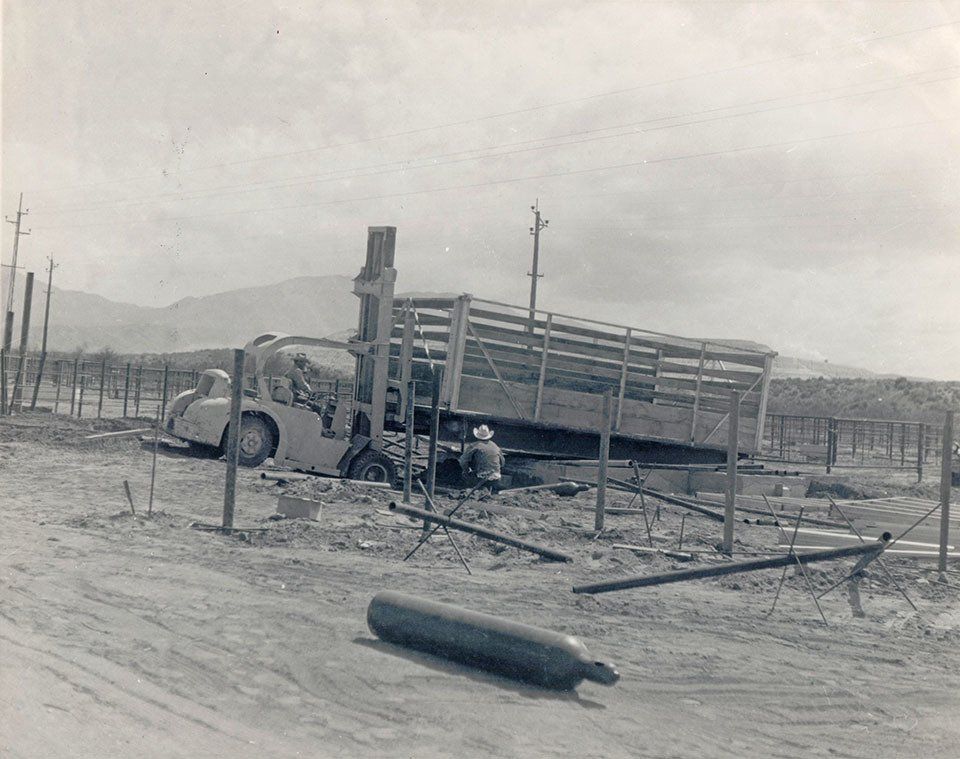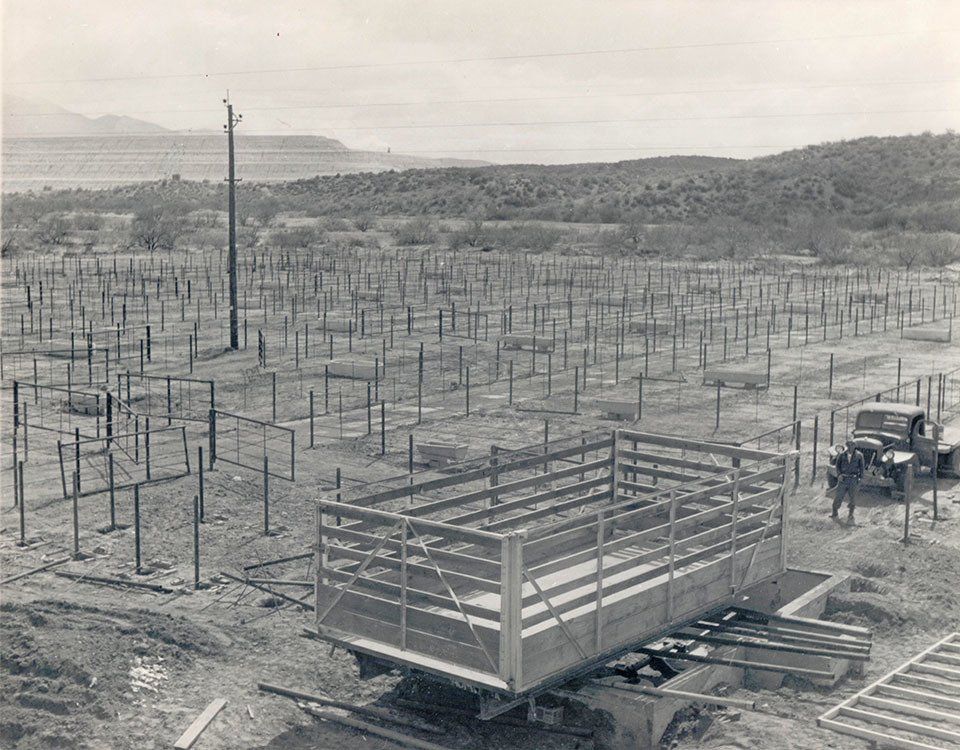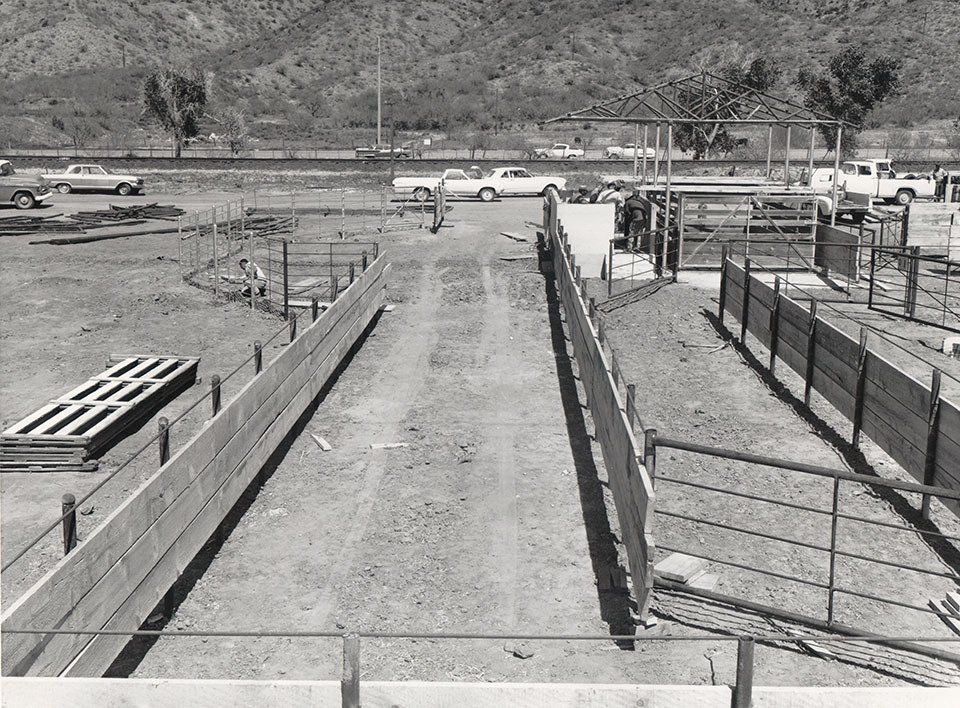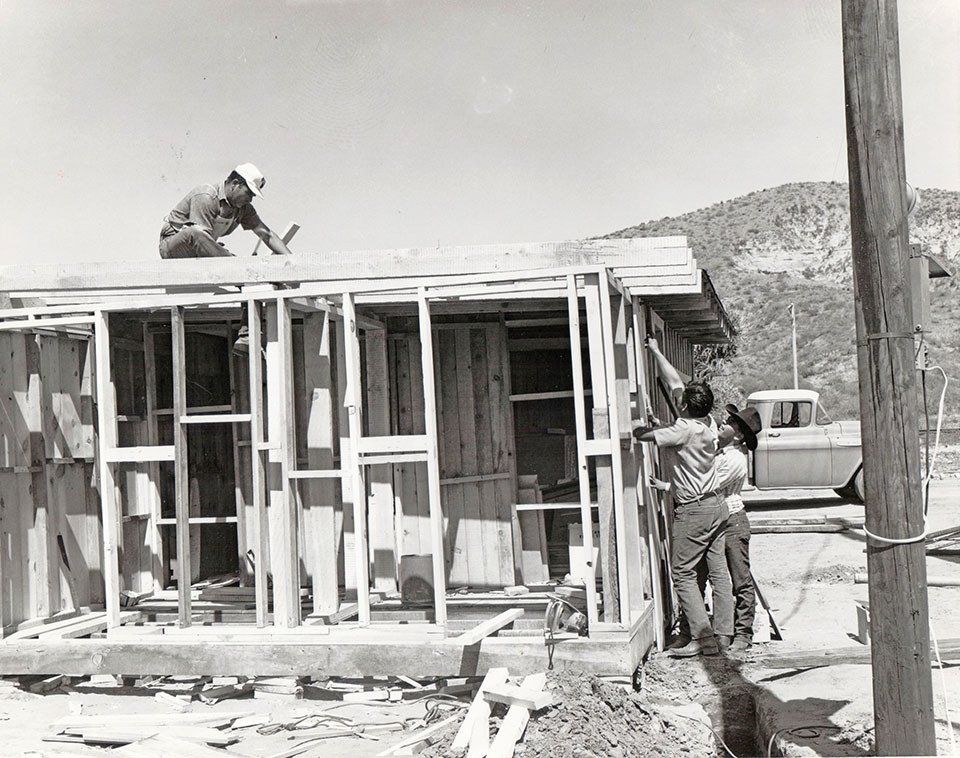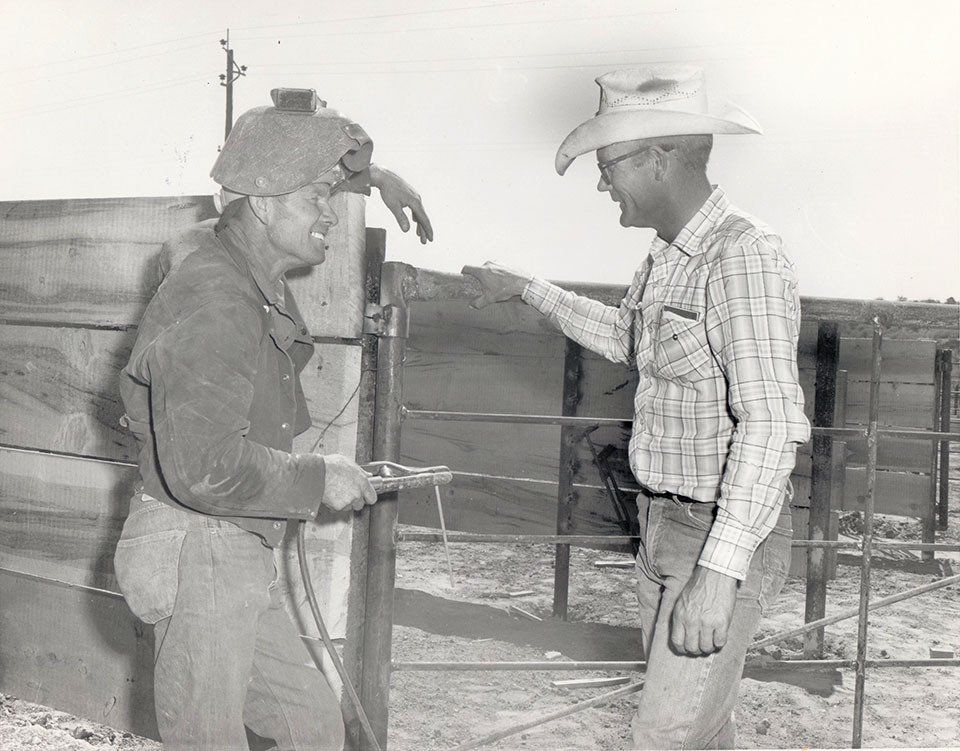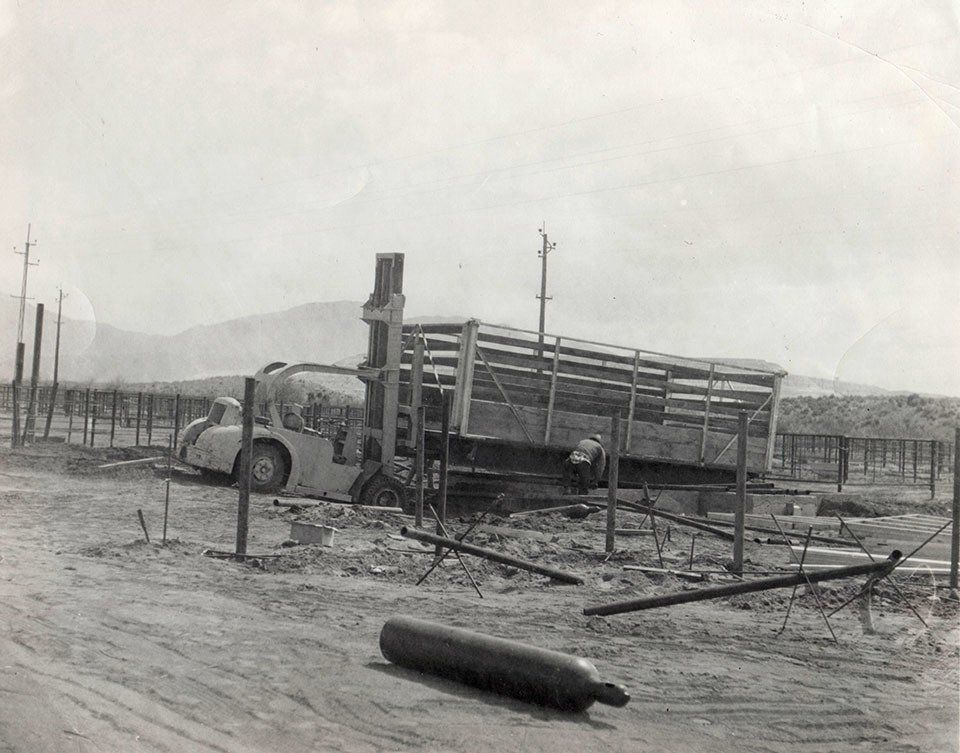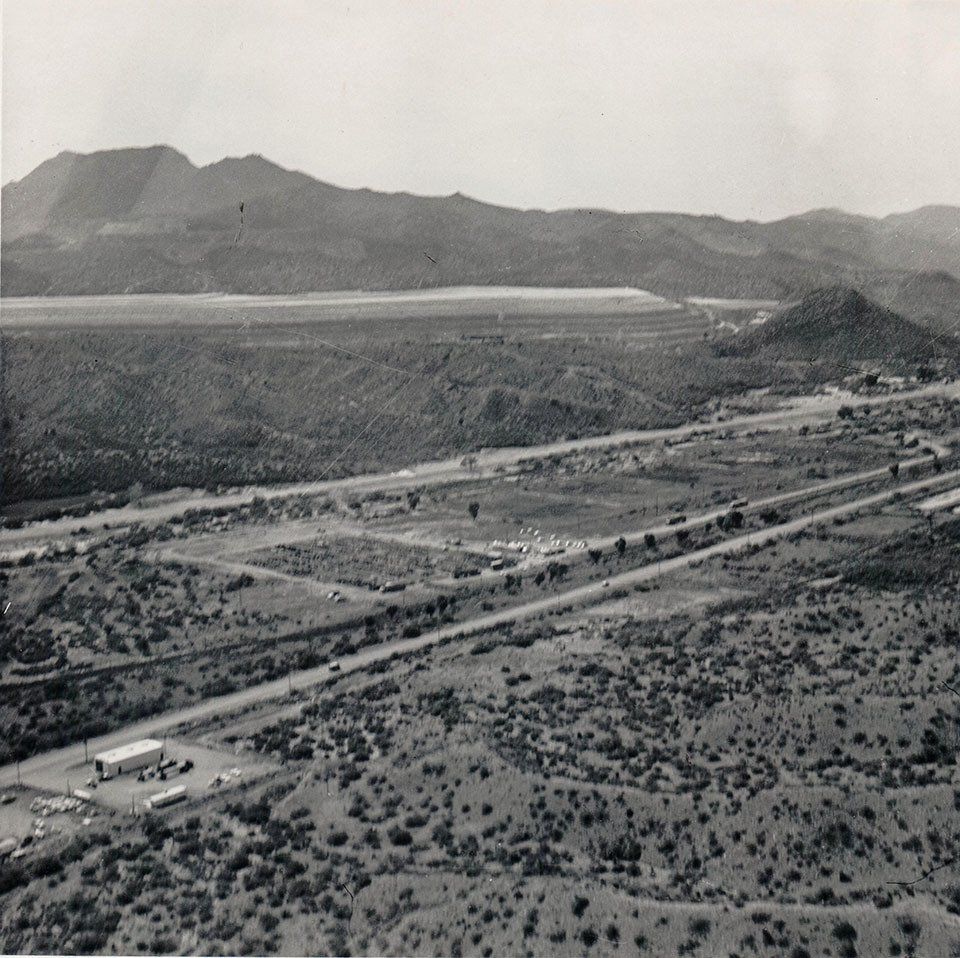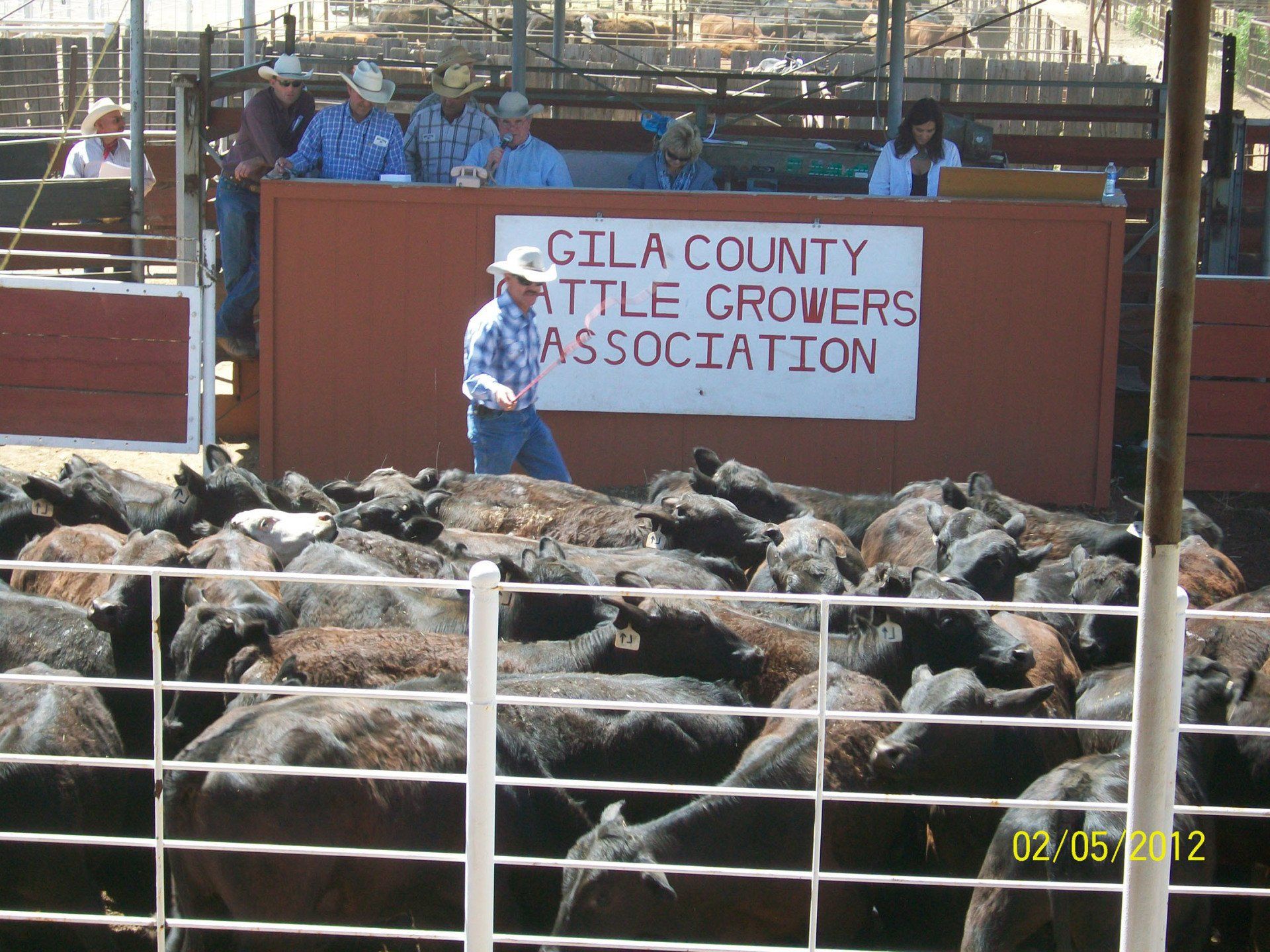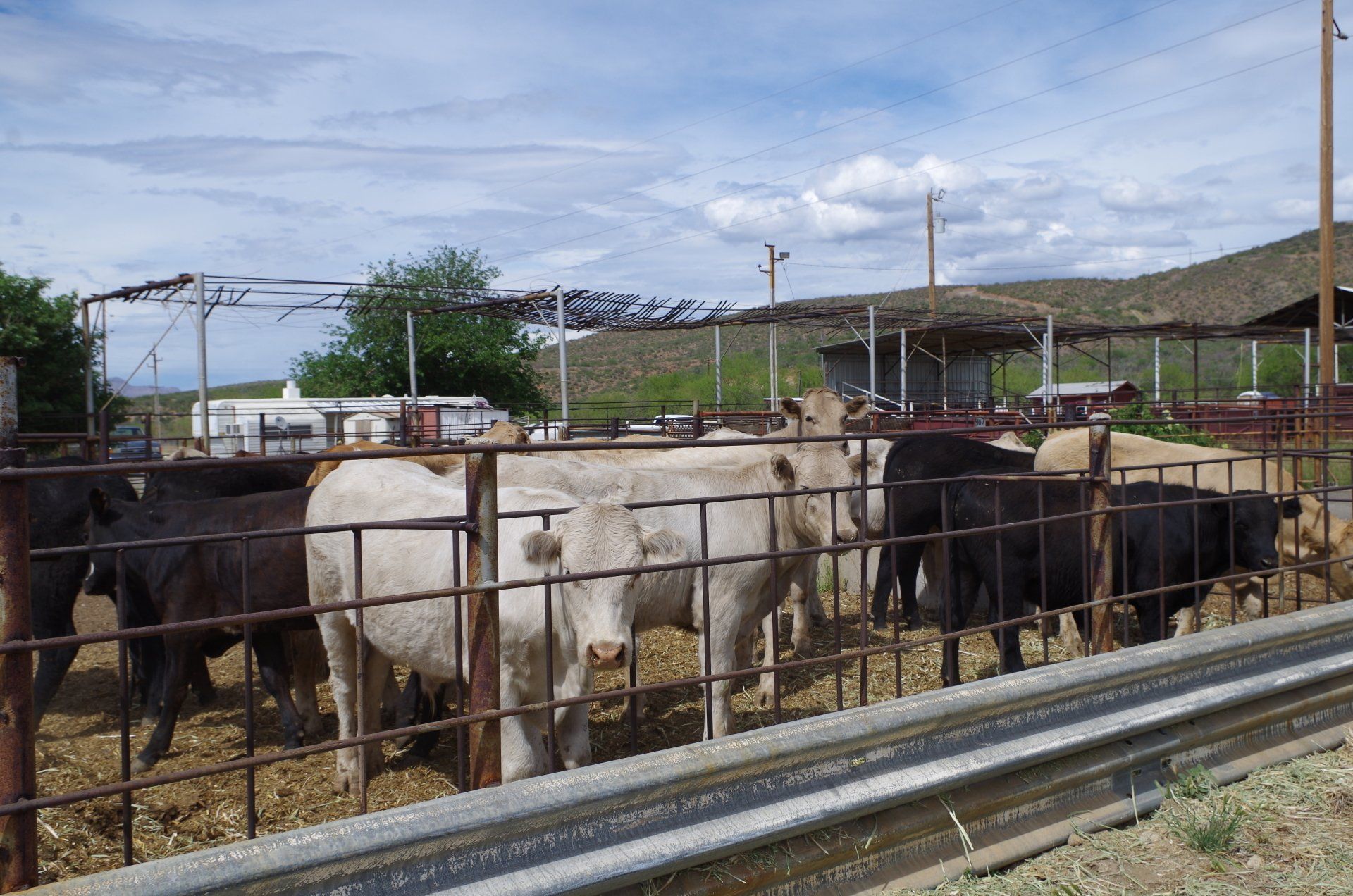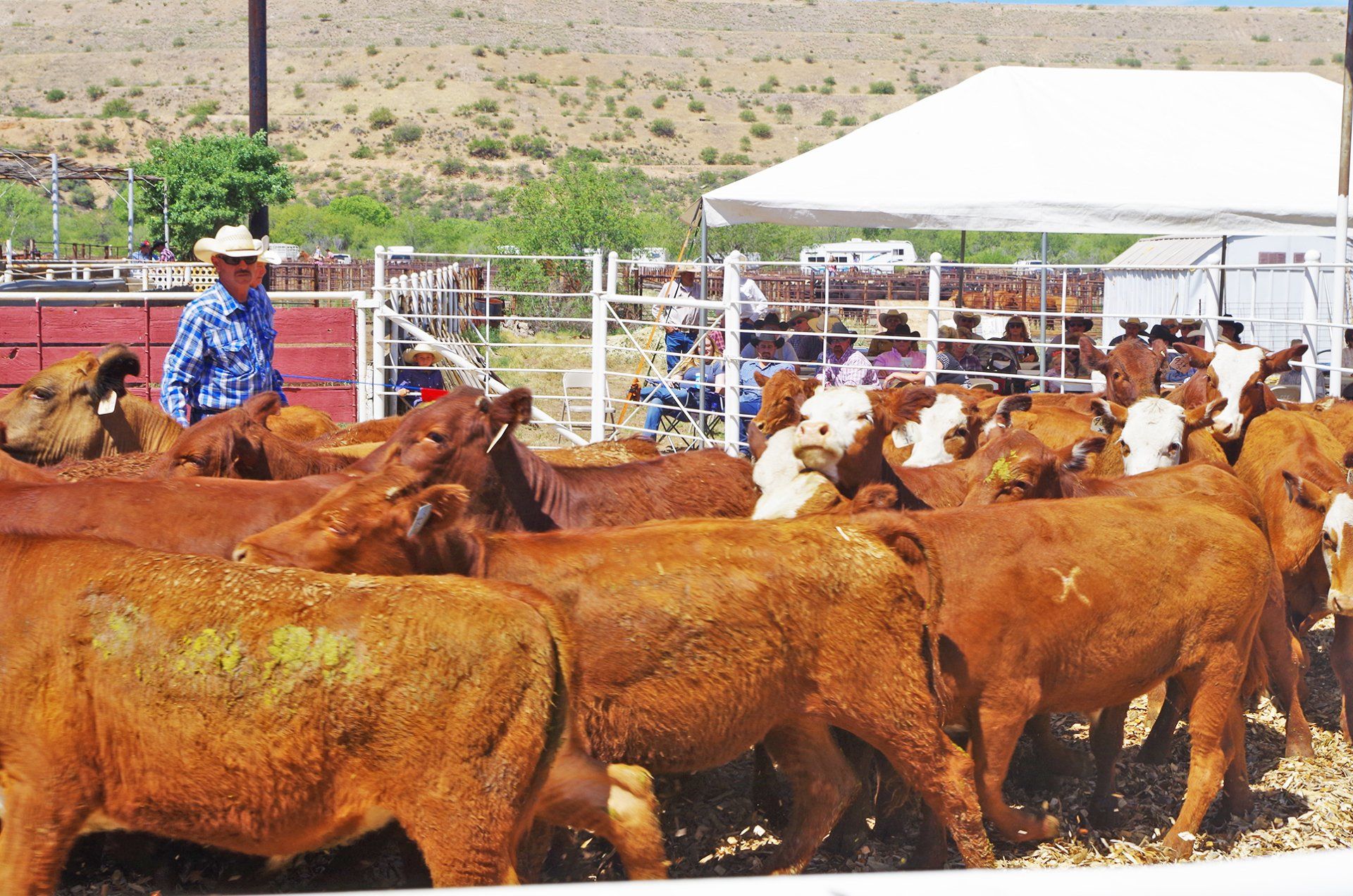Gila County Cattle Growers' Association Annual Auction History
1935 DROUGHT RELIEF
1945 9,000 HEAD SOLD
Probably the most important and far-reaching programs that the GCCG Association ever created was the Gila County Cattle Grower's annual spring yearling sale. Geographically, Gila County has a chance to have spring annual forage production that has to be seen to be believed in some years. Because of this, the USFS allows a spring yearling carryover, benefiting the country and the cattle as they utilize a bit of this forage, and keep fire dangers less threatening.
As most of the rest of the West sells their calves in the fall, it was always very difficult to get even market prices. The buyers knew that all yearlings had to be removed, by June 1st or a trespass would occur and the rancher's permit would be jeopardized. It would take a book and a large degree of incredibility to describe what a rancher with a big mortgage faced in getting his calves sold, especially in the bad days of the 50's. Everybody was on their own.
In the early 1960's some forward-thinking members with input from a new County Extension Service Director, Pat Gray, created a marketing committee. They, in turn, established a yearling listing service to let buyers know what livestock was available. They worked very hard, bought ads with many ideas of what to describe and advertise. By the middle 1960's it was apparent that the idea was not viable. In fact, somewhat ruefully, the 1964 minutes state "not one reply to our ads was received from prospective buyers".
In spite of this bad scenario, the leadership, Pat Gray, and cattlemen seemed even more determined than ever to help themselves develop a more equitable sales program.
1966
ASSOCIATION SPONSORED AUCTION
WORKING TOGETHER. . . .
Ranchers come up with solutions for new challenges!
1967
NEW CHALLENGES ARISE
1968
CONSTRUCTION BEGINS AT BURCH SALE YARD
Some early experiences dictated more rules and procedures. Somehow nearly every major stumbling block was resolved by leadership in an equitable and fair manner. For instance, "sale order"; every rancher would like to pick when his cattle enter the ring to exercise a real or perceived benefit. This problem was addressed by using the off the I ranch truck weight in ascending order selling from lightest on up. Small bunches (under 5 head) that could not be fitted, sold at the end which could help a buyer get a desired truck weight.
In these first sales it was also discovered that a Yardmaster had to be selected and that his word would have to be final as to applications of the sale rules. For instance, under the category of un-merchantable, stags would certainly be included. At times some consignors would insist that some of their yearlings were fresh-cut steers, not stags. The Yardmaster had to make the call and his decision stood.
Click Arrow below to play video.
Click Arrow above to play video.
Until 1970 every head sold was a Hereford, but in that year, 6 black white faced heifers were consigned and accepted with lots of reservations and some acrimony. That same year the average weight of the 4,650 (most ever) yearlings was just over 500 pounds and the price under 40 cents per pound equaling a $200 yearling.
1970 SALES ARE HIGH
1970 saw the largest sale todate with 2,709 steers at Burch and 1,937 heifers at the Stockyards.
Until 1970 every head sold was a Hereford, but in that year, 6 black white faced heifers were consigned and accepted with lots of reservations and some acrimony. That same year the average weight of the 4,650 (most ever) yearlings was just over 500 pounds and the price under 40 cents per pound equaling a $200 yearling.
1976COWBELLES HELP
1977ADD HEIFER PENS
There are so many individuals who have had a real impact in this sale and we could never list them all correctly or thank them enough. By the 70's every task associated with the sale was done by the membership except the auctioneering.
1982 CHANGES TIMES
Until 1982, there was never any less than 2,500 animals sold and after that it would be 10 years before that level could be attained...and that only by allowing out of county native cattle to be consigned.
1983 IMPROVEMENTS
The 1988 sale income set a record$1,016,047.95 with 2,270 head sold.
1988 SALES SOAR
The 1988 sale income set a record $1,016,047.95 with 2,270 head sold.
Sales Continued Successfully Through the 1990s.
'91
The 1991 sale had the highest average per head amount of $494.12 for the 1,464 steers and 1,195 heifers.
'93
'94
'99
New Millennium Brings New Challenges
2001
s ale numbers were down with only 941 steers and 817 heifers sold to the ten buyers attending.
2002
s ale was held in April due to drought conditions and the need to move cattle off the range with 866 steers and 620 heifers sold. No sale was held again until 2006 .
2006
T hrough the encouragement and hard work of then GCCGA President, John Fowler, the Association held its sale again in 2006 . Although still rebuilding herds, 299 steers, 423 heifers, 431 bred heifers, 16 pairs, and 8 bulls were sold. Once again, the sale was back on track.
2018 By 2018, Gila County ranching was once again crippled by severe drought conditions. Lack of water and feed, forced many of our ranchers to sell their herds early to minimize the effects of this severe drought situation. This time, however, most were able to keep a core herd to help re-build. During 2019-2020, re-stocking was going well. The cattle industry was beginning to look up all over the United States until the COVID-19 outbreak shut down many businesses. Restaurant and school closures severely slowed beef demand. Packing plants lost 23% of their production capacity. Due to current economic concerns caused by the COVID-19 pandemic, prices for beef have tumbled.
Dramatic changes in marketing avenues have also affected the marketing of our cattle in Gila County. More and more GCCGA members are selling their cattle on the internet or directly from their ranch.
Our traditional annual stocker and feeder sale has not occurred for the past three years. The Gila County Cattle Growers have battled "issues" as long as there has been the concept of multiple use lands designated for grazing in the west. We have worked hard to maintain the high quality cattle this part of the country has become known for. The GCCGA looks forward to many years ahead to new challenges and new successes as we continue to navigate the ebbs and flows of managing our association, marketing our Gila County cattle in whatever format best serves the economic interests of our ranchers and ultimately our community. We always remember the reason we come together to sell our cattle is to "facilitate the will to survive" as Gila County Ranchers wished to do when we first organized in 1934.
